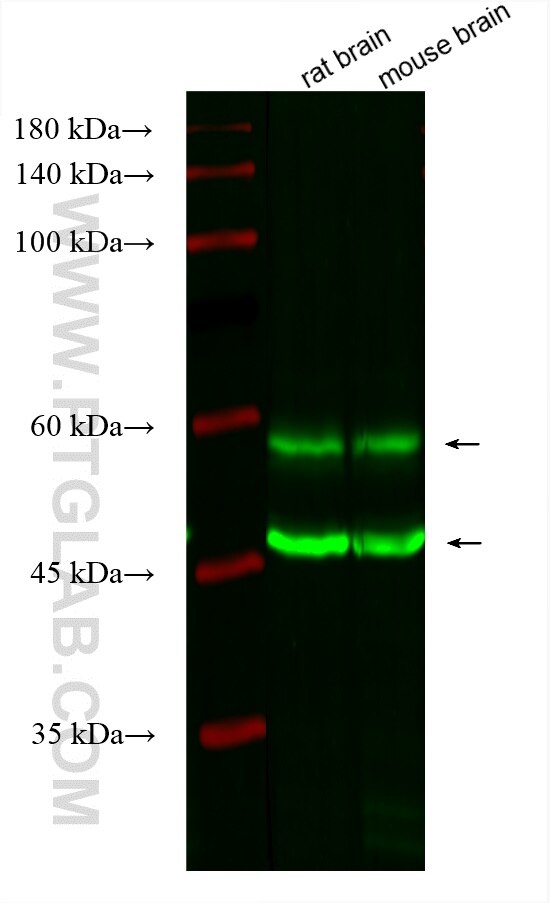Tested Applications
| Positive WB detected in | rat brain tissue, mouse brain tissue |
Recommended dilution
| Application | Dilution |
|---|---|
| Western Blot (WB) | WB : 1:1000-1:8000 |
| It is recommended that this reagent should be titrated in each testing system to obtain optimal results. | |
| Sample-dependent, Check data in validation data gallery. | |
Product Information
CL488-66843 targets CAMK2 in WB applications and shows reactivity with human, mouse, rat, pig samples.
| Tested Reactivity | human, mouse, rat, pig |
| Host / Isotype | Mouse / IgG1 |
| Class | Monoclonal |
| Type | Antibody |
| Immunogen |
CatNo: Ag4736 Product name: Recombinant human CAMK2A protein Source: e coli.-derived, PET28a Tag: 6*His Domain: 1-271 aa of BC040457 Sequence: MATITCTRFTEEYQLFEELGKGAFSVVRRCVKVLAGQEYAAKIINTKKLSARDHQKLEREARICRLLKHPNIVRLHDSISEEGHHYLIFDLVTGGELFEDIVAREYYSEADASHCIQQILEAVLHCHQMGVVHRDLKPENLLLASKLKGAAVKLADFGLAIEVEGEQQAWFGFAGTPGYLSPEVLRKDPYGKPVDLWACGVILYILLVGYPPFWDEDQHRLYKQIKAGAYDFPSPEWDTVTPEAKDLINKMLTINPSKRITAAEALKHPWI Predict reactive species |
| Full Name | calcium/calmodulin-dependent protein kinase II alpha |
| Calculated Molecular Weight | 478 aa, 54 kDa |
| Observed Molecular Weight | 45-60 kDa |
| GenBank Accession Number | BC040457 |
| Gene Symbol | CaMKII alpha |
| Gene ID (NCBI) | 815 |
| RRID | AB_3084277 |
| Conjugate | CoraLite® Plus 488 Fluorescent Dye |
| Excitation/Emission Maxima Wavelengths | 493 nm / 522 nm |
| Form | Liquid |
| Purification Method | Protein G purification |
| UNIPROT ID | Q9UQM7 |
| Storage Buffer | PBS with 50% glycerol, 0.05% Proclin300, 0.5% BSA, pH 7.3. |
| Storage Conditions | Store at -20°C. Avoid exposure to light. Stable for one year after shipment. Aliquoting is unnecessary for -20oC storage. |
Background Information
CaM-kinase II (CAMK2) is a prominent kinase in the central nervous system that may function in long-term potentiation and neurotransmitter release. It is a member of the NMDAR signaling complex in excitatory synapses it may regulate NMDAR-dependent potentiation of the AMPAR and synaptic plasticity. It has 10 potential isoforms with a molecular mass range from 21 to 63 kDa.
Protocols
| Product Specific Protocols | |
|---|---|
| WB protocol for CL Plus 488 CAMK2 antibody CL488-66843 | Download protocol |
| Standard Protocols | |
|---|---|
| Click here to view our Standard Protocols |




